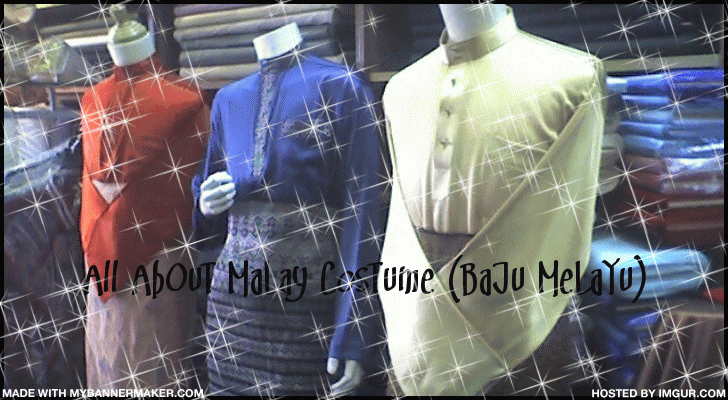Baju Melayu is the general reference to the traditional Malay costume for men and it is said that the style has been in existence since the 15th Century. Actually it has two specific style names, the Baju Kurung Cekak Musang and the Baju Kurung Teluk Belanga.
The man widely acknowledged as the creator of the male Baju Melayu, and the person who first popularized it in the 15th Century in the Malacca Sultanate is Tun Hassan Temenggong, the son of Bendahara Seri Maharaja Tun Mutahir.
The Malacca Empire was enjoying its heydays during the 15th to early 16th Century until the Portuguese conquered Malacca in 1511. It was the strongest empire in the region then stretching from Sumatra in the south to Thailand in the north, and was a center of entreport trade, with traders from India, China, Middle East and Europe coming and sailing to trade there.
With the influx of foreigners to Malacca, they also brought with them their own fashion styles. These eventually influenced the Malay attire, which combined the flowing loose fitting styles (robes) of the Arabs and Indians, trousers and pants of the Mongols and Turks, with the simplicity and elegance of the Europeans. And the Malay Baju Melayu was born.It was said that Malay men during the Malacca Empire in the 15th Century, wore rather simple attire.
The clothes they wore were said to be short sleeved and tight fitting. The shirt is basically a tunic, and the pants are cut in the style of the "gunting Aceh", that is, a little tight and ending at the middle of the lower leg.
This design and cut of the Malay men’s attire can be seen today, and is the usual wear of silat exponents during silat performances.And what are the changes Tun Hassan Temenggong made to the Malay attire then to warrant him to be known as the creator of the present Baju Melayu?
Well, Tun Hassan Temenggong was the person who first extended the over-all length of the men’s shirt dress down to the length of the arms. At the same time, he made them very loose-fitting, with the shirt dress widening downwards.He also lengthened the sleeves of the shirt to the wrists, and widened the end of the sleeves of the shirts to make it loose fitting. The cut ensured that the shirt sleeves could be folded up to the arms, when desired. This is useful when taking meals, for instance.And this cut and style of Baju Melayu remain with some slight variations until today, and considered as the traditional costume for the Malay men.Although there are slight variations in the costume, such as the neck design of the Teluk Belanga (Johore) style, the over-all simple cut and design of the Cekak Musang style, however, remains true to the Baju Melayu style pioneered by Tun Hassan Temenggong.This rather abrupt change or difference on the design attire for Malay men pioneered by Tun Hassan Temenggong was recorded in the Malay Annals or "Sejarah Melayu". The Baju Melayu is not just merely a dress or costume, but when wearing it, certain traditional practices and ethics are followed (knowingly or unknowingly) by the Malays.If you look at the Malay Baju Melayu Cekak Musang shirt, you will see that it is opened at the front from the neck up to the middle of the chest. The shirt usually contains five buttons, two at the collar or neck area and three for the upper body.This is the traditional cut and is of ethical significance, for the fact that Malays follow the Islamic faith or are Muslims, and this number of buttons on the shirt dress of the Baju Melayu signifies the five pillars of Islam.It is very rare indeed for the traditional Baju Melayu to have more than five buttons.

